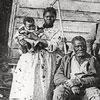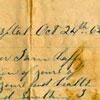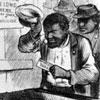Download Transcript: Secession
After Lincoln’s election in 1860, seven southern states voted to secede and form the Confederate States of America. Virginia was not among these first seven states and its eventual decision to secede was a difficult one. Virginia had a mixed economy, blending agriculture with factories and textile mills, including the largest ironworks in the country.
John Letcher, the Democratic governor of Virginia, called for a special session of the Virginia General Assembly to consider the question of secession, a deliberation that continued for four months until external events forced a decision.
On April 12, 1861, Confederate troops attacked Fort Sumter off the coast of Charleston, South Carolina. On April 15, President Abraham Lincoln declared this an insurrection and called for 75,000 troops from all states in the Union to suppress it. In response, the Virginia convention voted on April 17 to secede and join the Confederacy. In May, the Confederacy moved its capital from Montgomery, Alabama, to Richmond, Virginia.
In this video, Professor Chandra Manning discusses Virginia’s decision and the coming of the Civil War.
Source: Roy Rosenzweig Center for History and New Media, The Civil War in Virginia (Fairfax, VA, 2011), accessed September 20, 2011. Full video in Roy Rosenzweig Center for History and New Media and Loudoun County Public Schools, “Source Analysis: Civil War Letters,” Foundations of U.S. History, accessed September 16, 2011.












